One of the most beautiful squares in Umbria, Piazza dei Priori – in the past Platea Major – is in the highest part of Narni and hosts the most important buildings of the town.
An audience for the most beautiful palaces of the city of Narni.
This was the square where the Roman forum stood, this was the square in which, during the Middle Ages, the palaces were built, places symbol of the government of Narnia:
- the Priori Palace, whose loggia is attributed to the Gattapone, once the seat of the city’s magjistratures, now the seat of the Corsa all’Anello Authority and the nascent Multimedieval Museum;
- the Civic Tower with the loggia of the auctioneer once used for reading the notices;
- the Sacripante Palace, a building built by the union of several tower houses and belonged to Cardinal Giuseppe, the munificent patron of the city from 1695 to 1727;
- the Podestà Palace, obtained by the union of three tower houses in the fourteenth century, now the seat of the Municipality;
- at its side the Calderini Palace magnificent example of civil construction made by Lutio Calderini at the beginning of the seventeenth century with refined graffiti decorations;
- The splendid Fountain of the fourteenth century already part of the complex that incorporated the ancient Church of San Salvato, deconsecrated in 1711 to give space to the archive of which remains traces in Christ blessing attributed to Bartolomeo Torresani, still visible in the Tourist Office.
- the Church of Nostra Signora di Lourdes;
- and the Manini Theatre, inaugurated in 1856 to replace the seventeenth-century theater of the Palace, destroyed on the night of May 2, 1746 by fire.
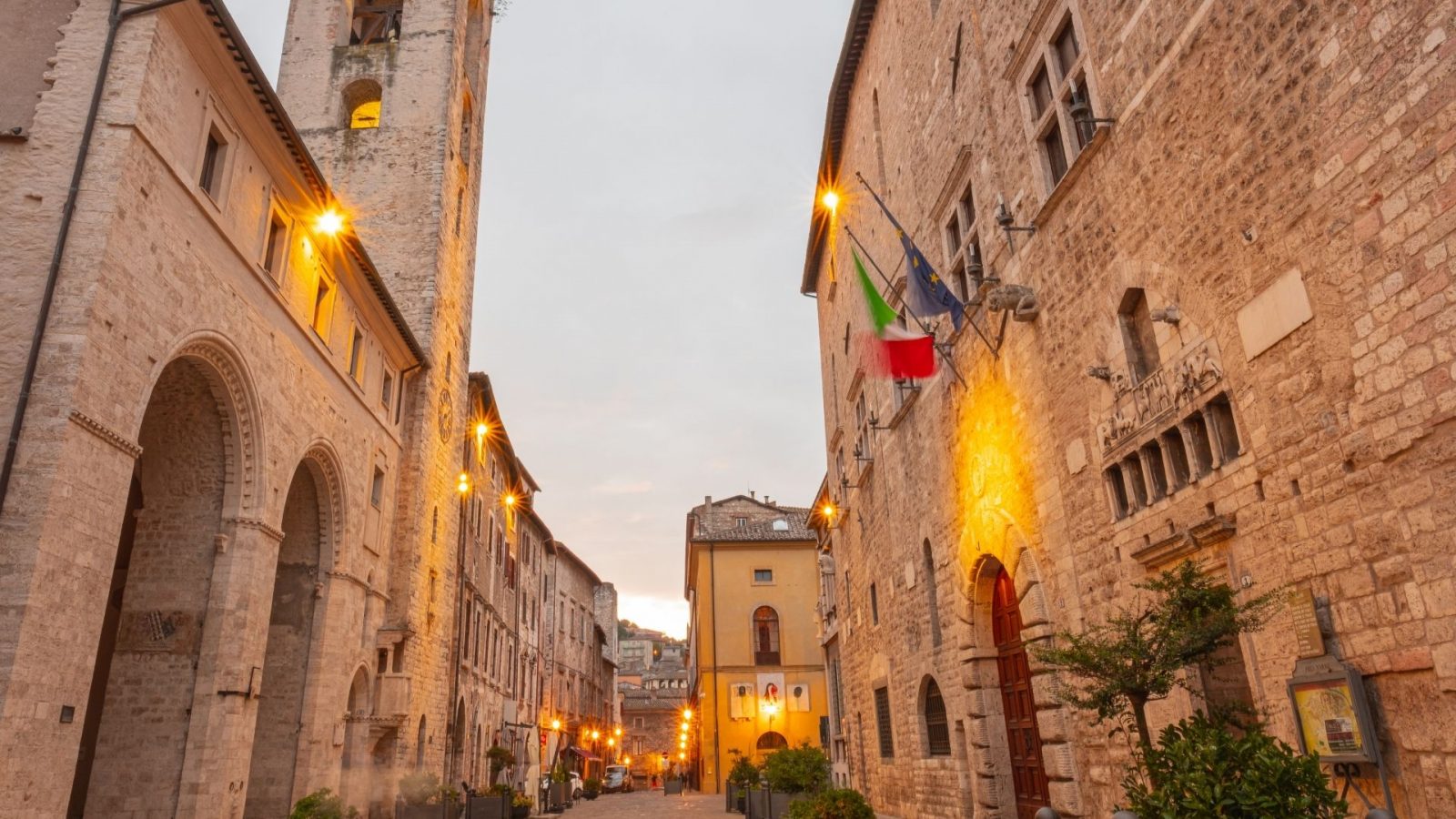
The Medieval fountain.
To close, at the end for those who come from Via Garibaldi, the Fountain of PIazza dei Priori built in 1303 by Marcuccio from Todi and Giovanni di Marco.
The fountain is in poligonal plant, composed of twenty mirrors in reddish almond or a pinkish marble with ammonites, among which are visible white marble columns.
Inside it is visible a millstone where is fixed a travertine block on which is inserted a bronze barrel, overlooked by a mug, in bronze as well.
This, under the edge, is decorated by six heads of feline animal with the purpose of cane and interspersed with six coats of arms with the winged Grifo. Under the attack of the cup are still seen today four rods in the shape of an animal: three figures of a lion and a bull.
The development of the square, as the fountain placed on the end and not central, was thanks to the numerous interventions which were made during the centuries. In the past the access was from the narrow Via del Fondaco then from the actual Via Garibaldi. The street was expanded at the beginning of 1900 cutting the palaces placed on the side of the actual theater.
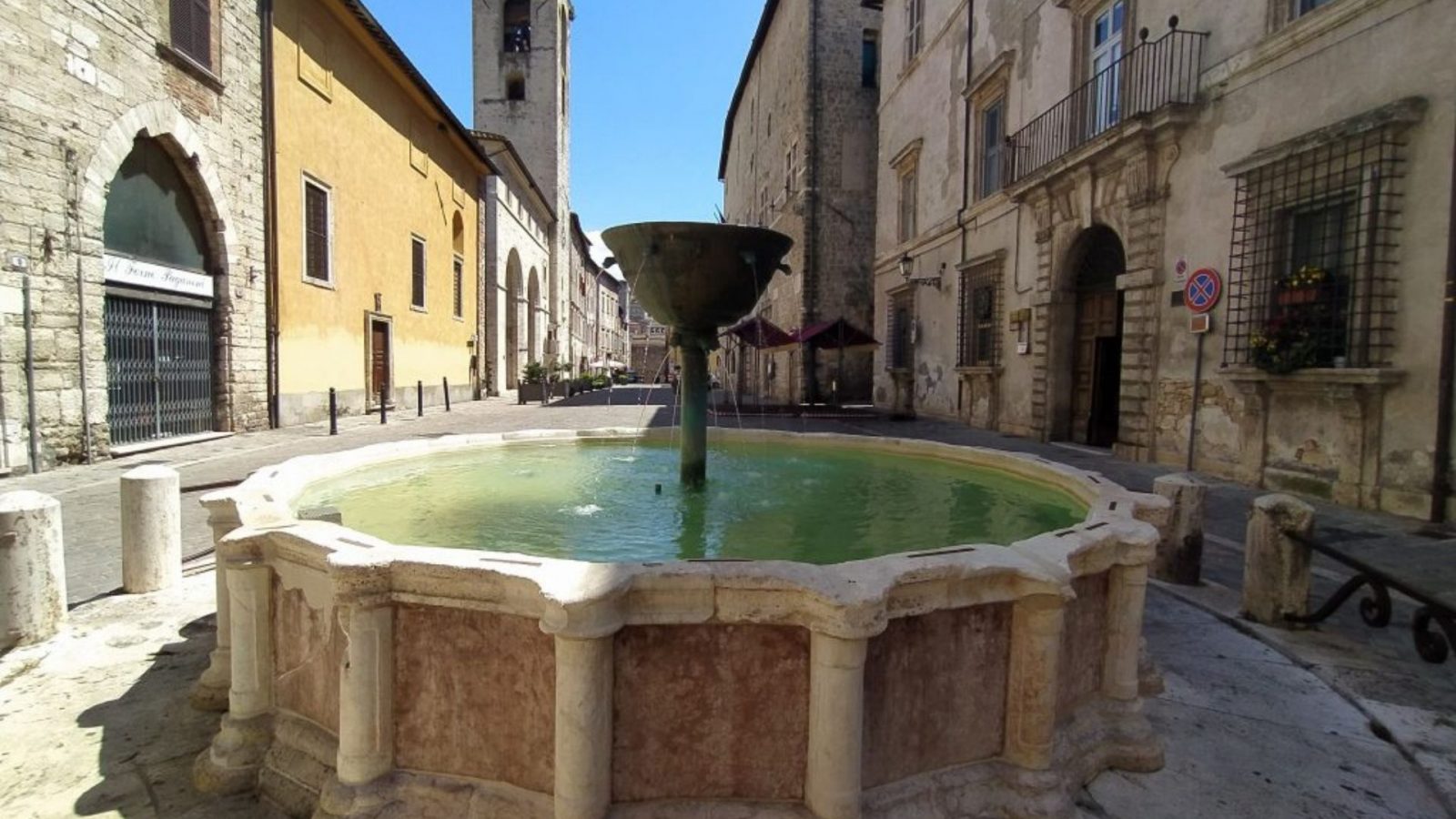
The Historical Equestrian Race and the Parade during the Corsa all’Anello.
In this square during the celebrations in honor to San Giovenale on May 3 there is the race of the Historical Equestrian Race – De Anulo Argenteo Currendo.
The event, taking back the rules of the Statutes of 1372, recalls a medieval race where the knights of the three Terzieri – Mezule, Fraporta e Santa Maria – have to must be able to gallop with a spear a ring smaller and smaller, on pain of exclusion.
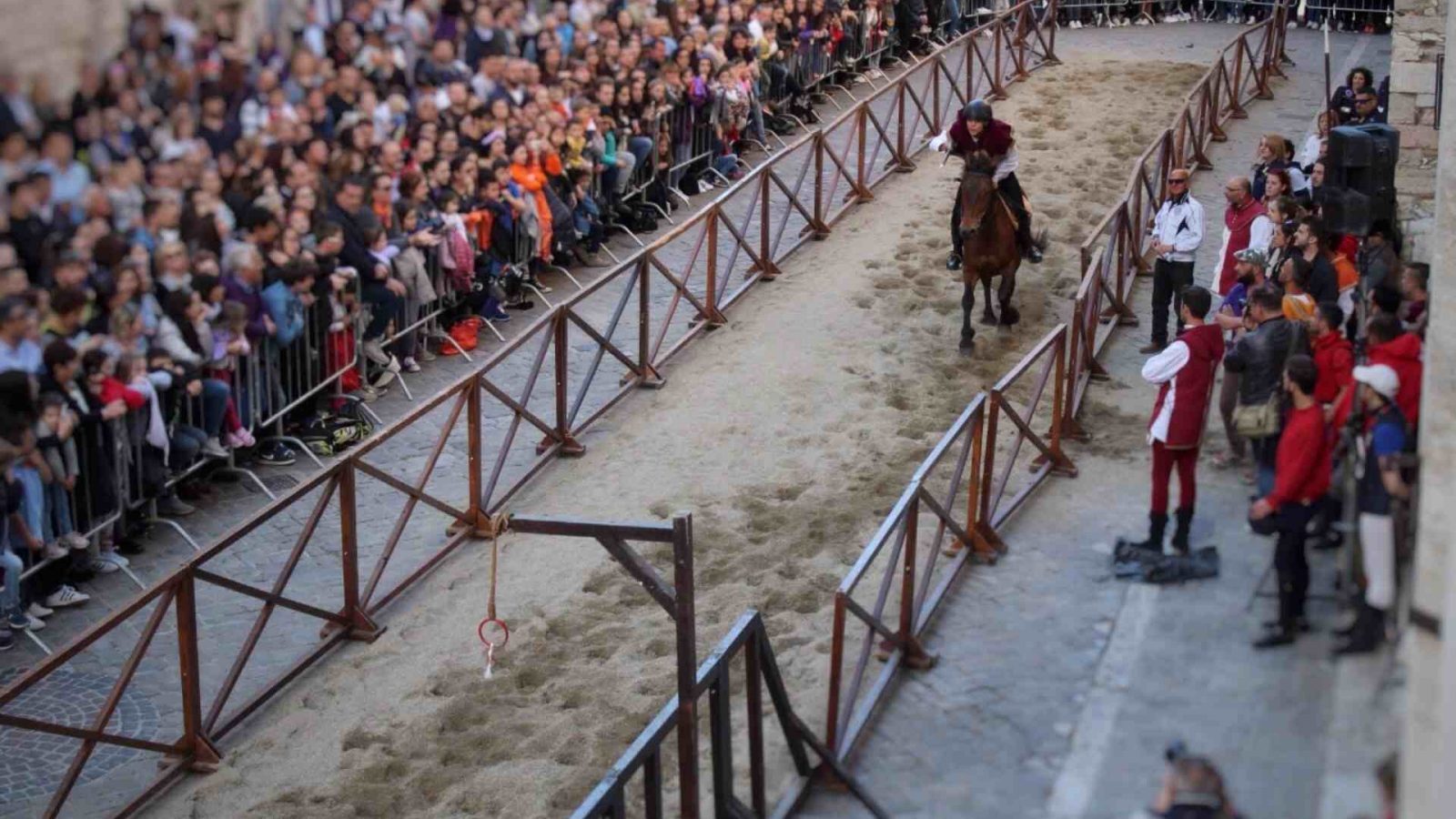
Piazza Priora is also the headquarters of the departures of the Big historical parade, another event of big suggestion placed inside the weeks dedicated to the Corsa all’Anello.
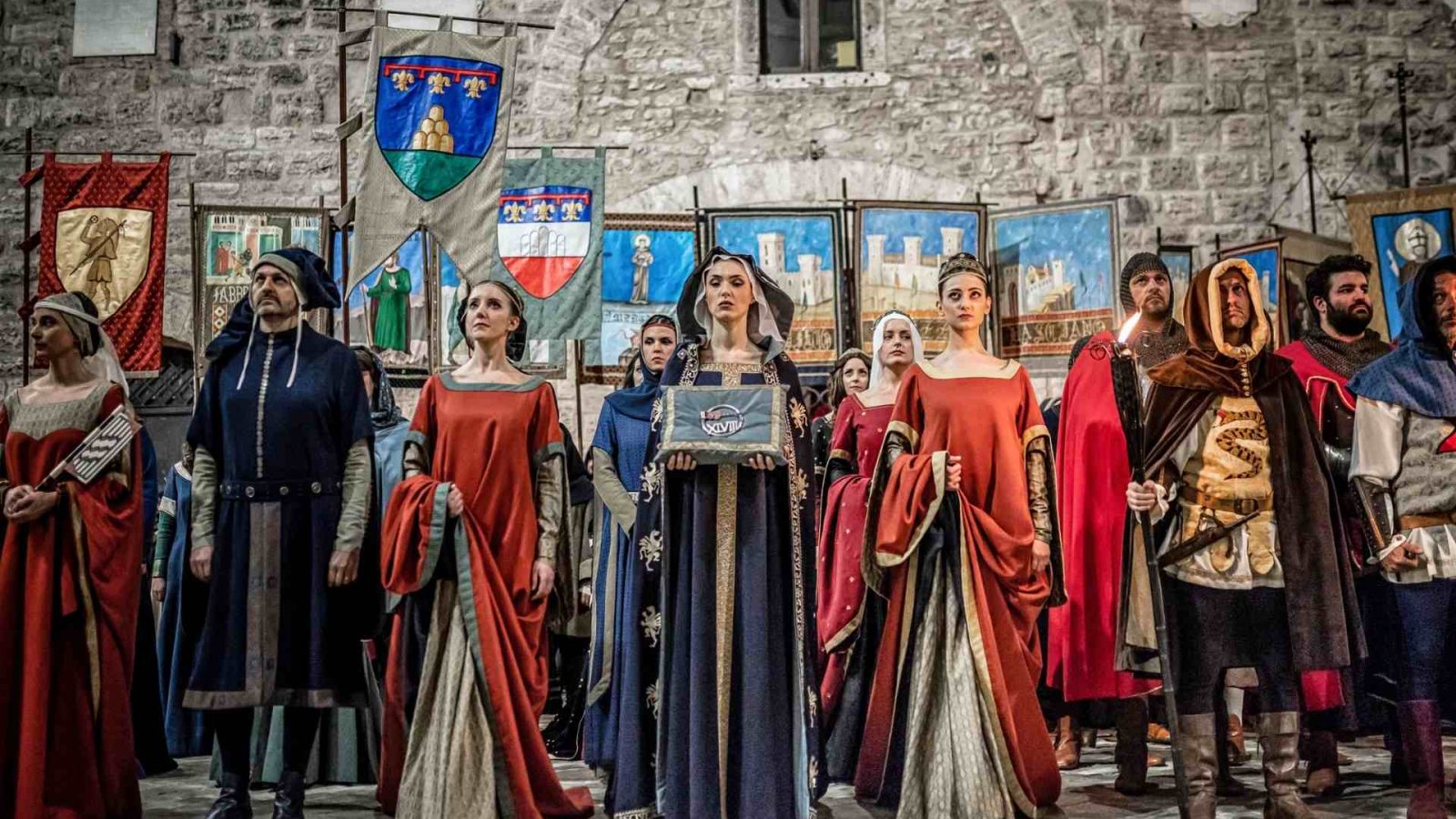
Piazza dei Priori
Piazza dei Priori, 05035 Narni TR
Piazza dei Priori is in the old town of Narni, a square rich with locals and restaurants.
To reach the square it is suggested to park the car at the Suffragio Parking and go up with the elevator until via Garibaldi.
Discover Narni.
Continue to walk with us discovering what to see inside the walls of Narni.
Or discover the points of interest of Narni and of its territory:
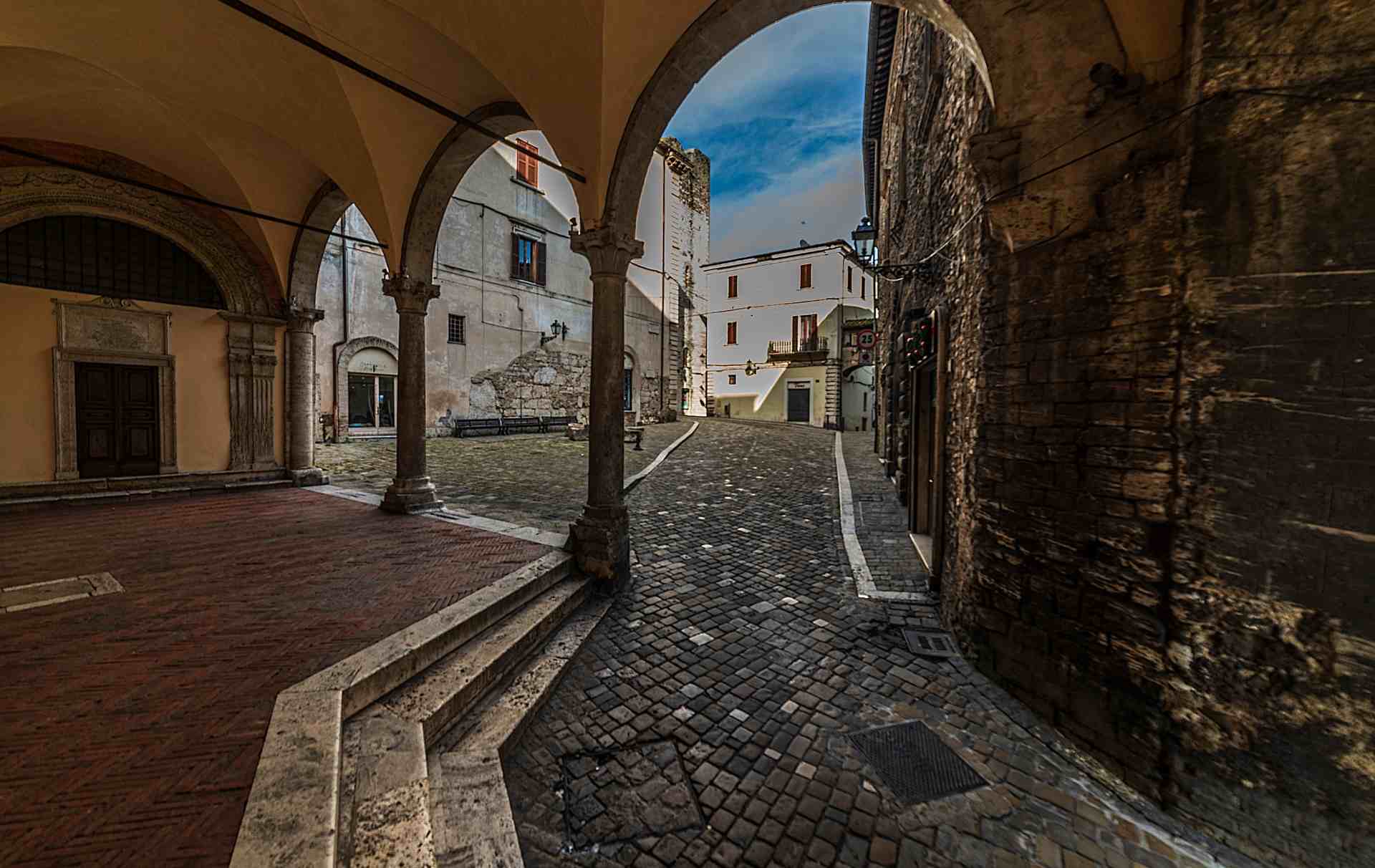
The facade and the Renaissance Porch
The principal facade of Narni’s Cathedral, faced on piazza Cavour, is characterized by a porch built during the renaissance, which frames three marble doors with
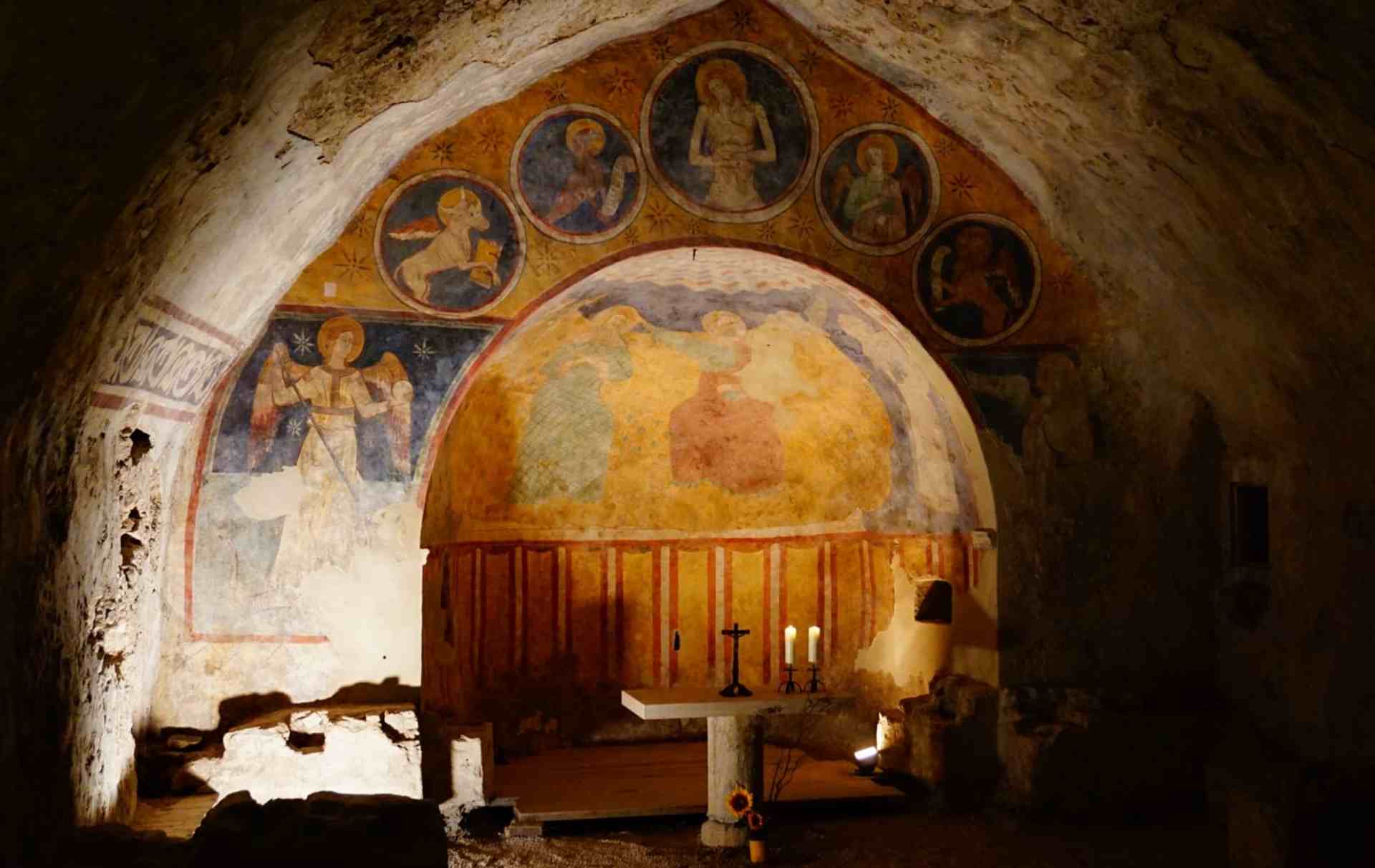
Narni Underground
More than a complex of churches and hypogeal ambience, Narni Underground is a story: the history of its incredible discovery in 1979 and the events

Piazza Galeotto Marzio
Placed at the end of Via Mazzini and enriched by beautiful palaces which faced it, Piazza Galeotto owes its name to the big humanist from


